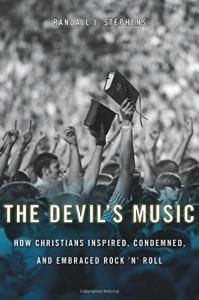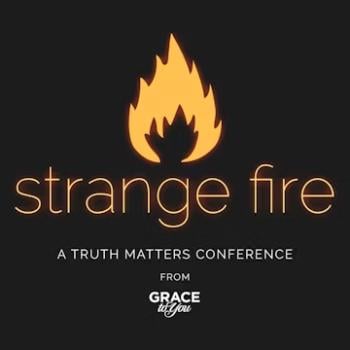Sister Rosetta
Godmother of rock and rollThe original sister of soul
All our music was in her
She brought rhythm
From the darkness into the light
She brought the good word to the night
To save all our sinners
(Frank Turner)
One of my favorite things about the Twin Cities of Minneapolis and St. Paul is one of our local public radio stations: 89.3 The Current. Its mission of bringing “listeners the best authentic new music alongside the music that inspired it” seems tailor-made for music-loving historians like me. That formula was never more clear than during a recent in-studio performance by British indie folk-rocker Frank Turner, promoting his new concept album, No Man’s Land. What he calls “a history record” about women, its first single tells the story of Sister Rosetta Tharpe, whose gospel singing and electric guitar playing inspired everyone from Chuck Berry to Eric Clapton.
“The point of the song, for me,” Turner has explained, “is that the history of rock’n’roll is inaccurately portrayed as being dominated by white men. As one of that demographic who plays that kind of music, I felt like it was good for me to acknowledge the people who actually laid the blueprints I’m following, rather than just always banging on about Elvis – as I’ve done myself in the past.” His recording continues a recent revival of interest in Sister Rosetta, sparked in part by Gayle Wald’s 2007 biography Shout, Sister, Shout! While rock music “has long been associated with masculine prowess and male musicians,” Wald points out that the genre’s “gospel roots betray its feminine heritage—a heritage located largely in the Pentecostal Church.”
Born in rural Arkansas, Rosetta Tharpe grew up in the Pentecostal Church of God in Christ. (As distinct from the Church of God headquartered in Cleveland, Tennessee, one of whose congregations later taught a young Arkansan named Johnny Cash his love of gospel music. He later covered Sister Rosetta’s songs.) Wald observes that Tharpe’s sharecropper parents found in their church “more than an institution in which they could reaffirm, from week to week, a sense of black community and humanity. It also allowed them to express themselves in a way that connected them to the faith of their earliest enslaved ancestors, who gathered in ‘hush arbors’ to perform African-based spirituals like the ring shout.” Both parents were singers, and her mother Katie played mandolin; Rosetta took up the guitar as a young child, and she soon toured with Katie, eventually becoming a fixture at a COGIC church in Chicago. The denomination’s tradition of integrating multiple types of music and dance into worship “provided Rosetta’s earliest musical template, the sound palette on which she would draw throughout her career. No matter how far she might stray from COGIC principles of holy living, or how far she might fall from the favor of the denomination’s strictest and most unforgiving members, Rosetta’s musical sensibility still bore the distinct mark of Pentecostalism.”

And if the Godmother of Rock and Roll was shaped by Pentecostalism, so was the genre itself, as historian Randall Stephens argues in The Devil’s Music: How Christians Inspired, Condemned, and Embraced Rock ‘n’ Roll:
The leap from unbridled sanctified music to rock was not a great one. Unlike their condescending critics, pentecostals were not burdened with the trappings of tradition or the weight of convention… They sang new, up-tempo hymns and worshiped in ways that made other Protestants shudder with disgust…
Some secular observers also felt disgust at the sound of music that so clearly sprang from the “uninhibited, unconventional revivals” of Pentecostalism, whose “music tore down the walls of genres as well.” Stephens notes that even Benny Goodman was too much for one critic, who complained that the bandleader’s concert reminded him, first, of attending a camp meeting where the evangelist “knew how to play on the heart strings,” and second, of “the halls where Holy Rollers held their meetings in the camps of the colored people of the southland.”
Stephens starts his chapter on Pentecostalism and rock ‘n’ roll with Elvis, but does take note of Sister Rosetta, who “achieved critical acclaim in the late 1930s for her skillful guitar-accompanied gospel.” Reporters at the time weren’t always sure how to describe a Pentecostal gospel singer playing electric guitar. Gayle Wald found examples of Tharpe being called a “hymn swinging evangelist,” a “religious shouter,” and a “Holy Roller Singer.”
Even as Tharpe “resisted the moral severity of the Pentecostal Church” (and left her preacher husband), Wald emphasizes how she continued to embrace “its musical values of emotional expressiveness… She was a woman of many guises: she could play the sincere penitent, the deep spiritualist, the saintly believer, or she could play the humorous exhibitionist, the uninhibited flirt, the needy child.” She could even satirize the church. The chorus of Turner’s tribute song (“Rosetta rolled her eyes when she played / She knew that strange things happen every day”) alludes to her popular 1945 spiritual, which contrasted the hypocritical sanctimony of those “in the holy way” with the “strange things” done by Jesus, “the holy light / turning darkness into light.”
Sister Rosetta’s career went into decline in the 1950s, but she continued to perform until a stroke in 1970. (She died three years later.) I’ll close with this British TV clip from her 1964 tour of Europe, alongside blues singers like Muddy Waters. It’s a powerful example of her ability to make sacred music meaningful in secular spaces.
For more on Sister Rosetta Tharpe, check out this first episode of the podcast series Turner produced as a complement to his album. It features a visit to the Rock ‘n’ Roll Hall of Fame with curator Nwaka Onwusa (who reflects briefly on the COGIC heritage she shares with Tharpe) and his conversation with Australian singer-songwriter Emily Barker, who wrote her own song about Sister Rosetta after reading Wald’s book. Or check out Mary Chapin Carpenter’s own tribute, released three years ago:













